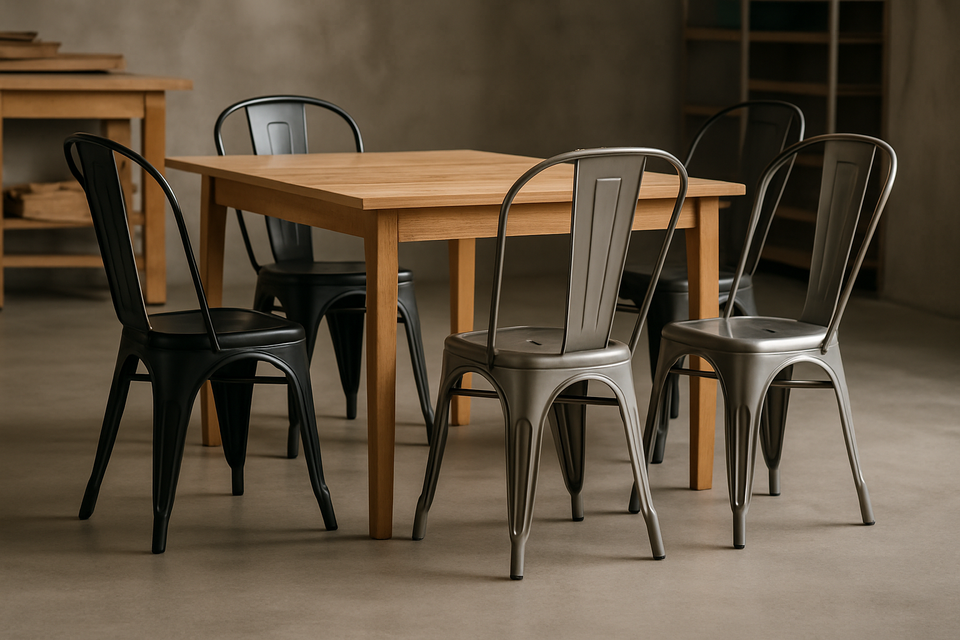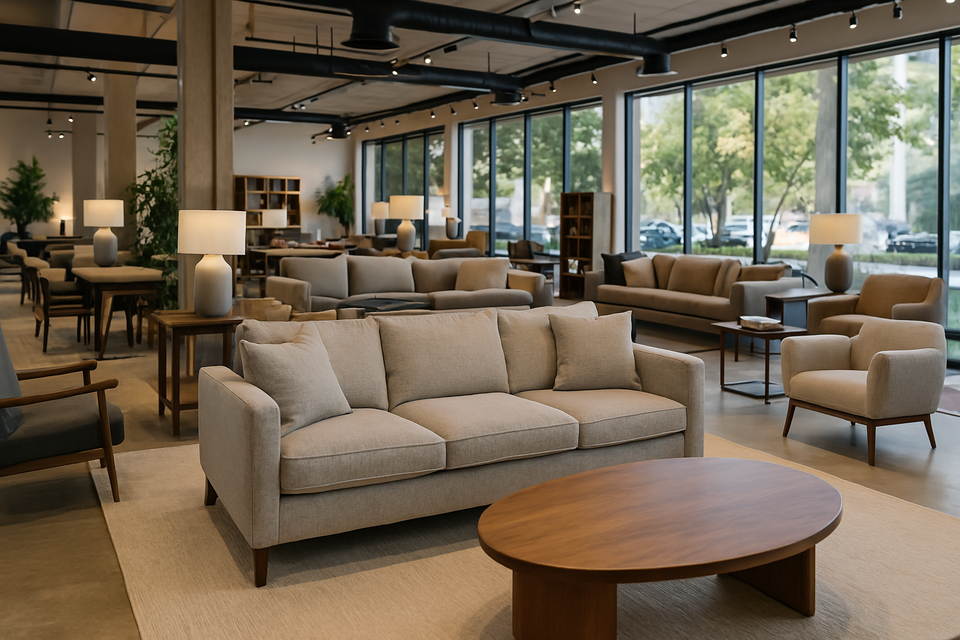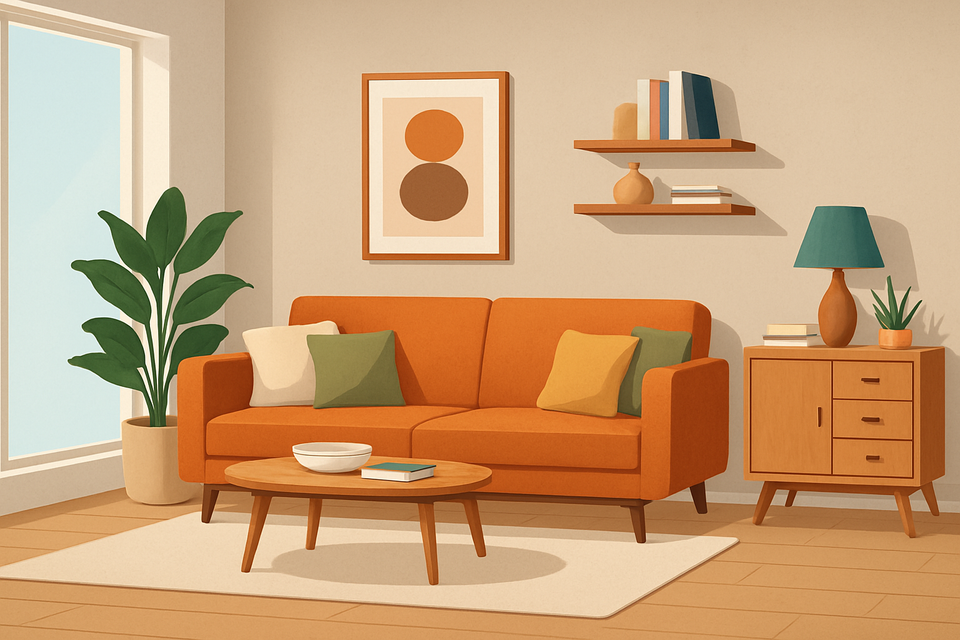Attempted and Tested Tricks That May Help Your Sofa Last Forever
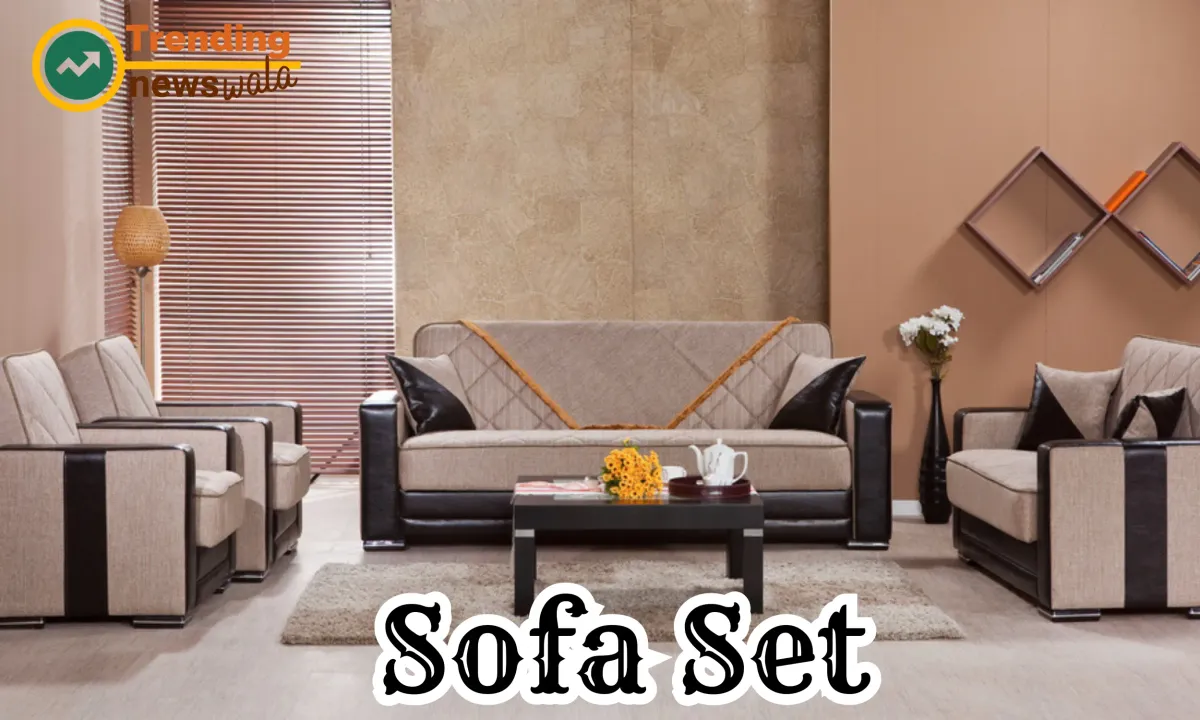
Attempted and Tested Tricks That May Help Your Sofa Last Forever
Your sofa is the centerpiece of your living room and one of the most frequently used pieces of furniture in your home. It's where you lounge, relax, and entertain guests, so it's important to take care of it. By following a few simple tricks, you can help your sofa last forever.
Investing in a high-quality Luxury sofa is a significant decision for your home. A well-chosen sofa not only enhances the aesthetics of your living space but also serves as a comfortable retreat. While sofas are designed to withstand regular use, a little care can go a long way in ensuring their longevity. Here are some tricks that may help your sofa last forever:
Choose Quality Upholstery
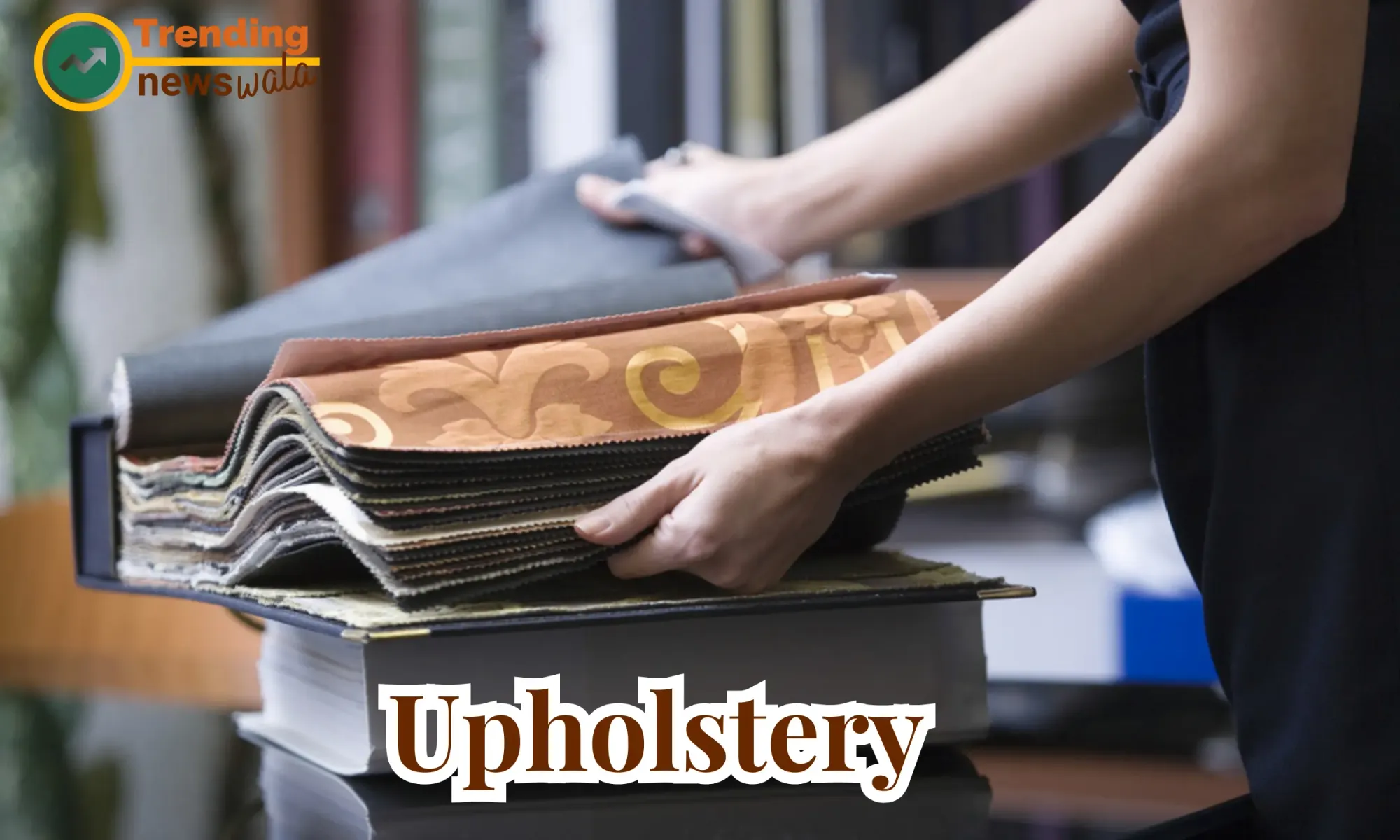
The foundation of a durable sofa lies in the quality of its upholstery. Opt for fabrics that are known for their durability and resistance to wear. Materials like leather, microfiber, and tightly woven fabrics are excellent choices that can withstand the test of time.
Importance of Quality Upholstery: The longevity and resilience of a sofa depend significantly on the quality of its upholstery. High-quality materials are better equipped to withstand daily wear and tear, resist damage, and maintain their appearance over time.
Durable Materials:
- When choosing upholstery, opt for materials known for their durability. Some popular choices include:
- Leather: Known for its durability, comfort, and timeless appeal. It tends to age gracefully and can withstand regular use.
- Microfiber: A synthetic fabric that is resistant to stains and wear. It is easy to clean and maintain.
- Tightly Woven Fabrics: Fabrics with a tight weave are less prone to snagging and wear. They offer durability without sacrificing comfort.
Consider Lifestyle and Usage: Consider your lifestyle and how the sofa will be used. For households with children or pets, stain-resistant and easy-to-clean fabrics may be preferable. Leather can be an excellent choice for those seeking a luxurious and long-lasting option.
Resistance to Wear: Quality upholstery should be resistant to wear and fraying. Fabrics with a high abrasion resistance rating are more likely to withstand the friction and rubbing that sofas typically experience.
Comfort and Aesthetics: While durability is crucial, also consider comfort and aesthetics. Choose upholstery that aligns with your comfort preferences and complements the overall design of your living space.
Manufacturer Recommendations: Check the manufacturer's recommendations for upholstery care and maintenance. Some materials may require specific cleaning methods, and following these guidelines can contribute to the longevity of the sofa.
Test Before Purchase: Whenever possible, test the upholstery in person before making a purchase. Feel the fabric, assess its texture, and consider how it responds to pressure. This hands-on approach can give you a better sense of the material's quality.
Investment in Longevity: Viewing upholstery as an investment in the longevity of your sofa can guide your decision-making. While high-quality materials may come with a higher initial cost, they often pay off in terms of durability and extended lifespan.
Rotate and Fluff Cushions
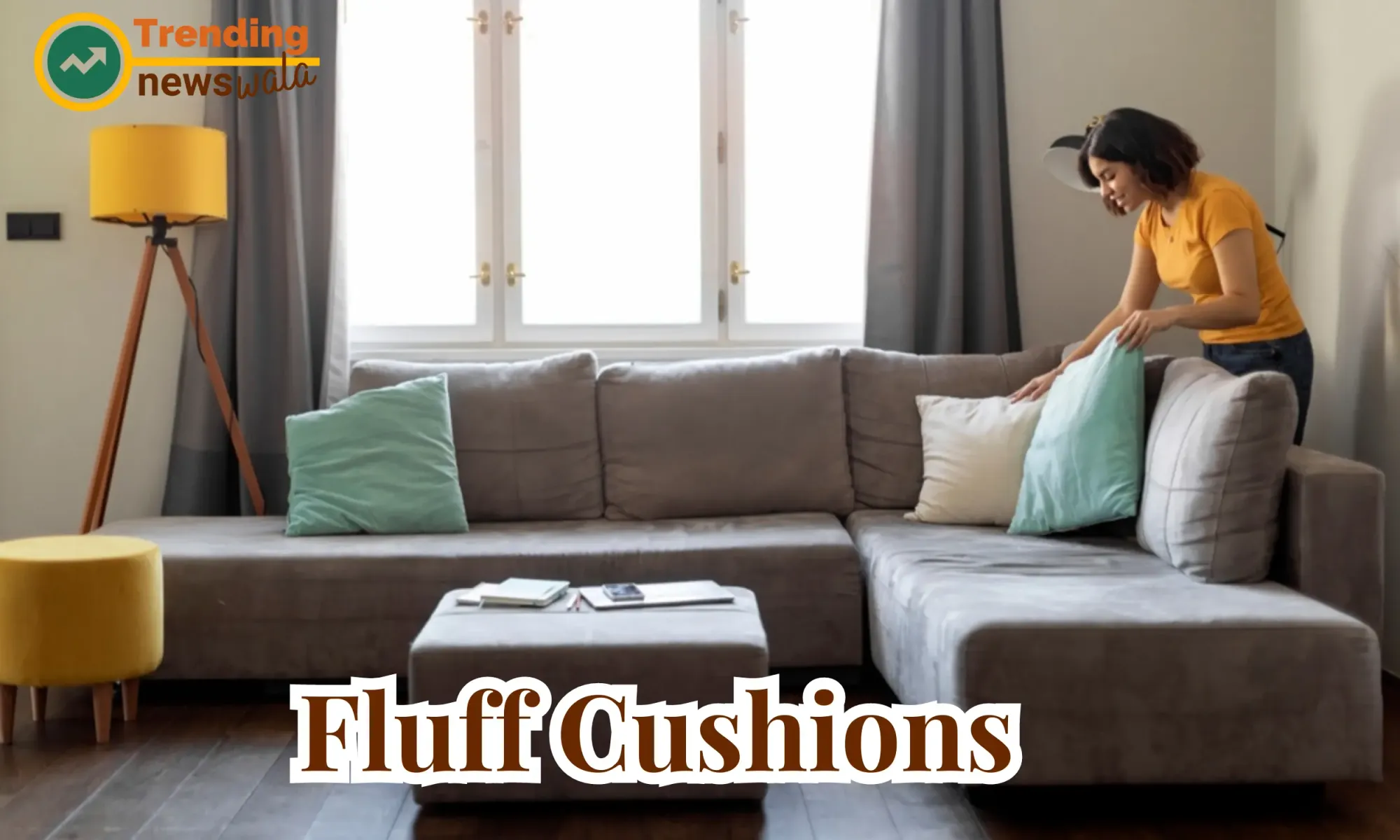
Regularly rotate and fluff your sofa cushions to ensure even wear. This simple trick helps maintain the shape of the cushions and prevents one side from bearing the brunt of constant use. Fluffing also redistributes the filling, keeping the sofa comfortable.
- Rotate Cushions: Sofa cushions often experience varying degrees of wear, with some areas receiving more pressure and use than others. By regularly rotating the cushions, you distribute the impact of weight and usage more evenly across all cushions.
- Importance of Rotation: Regular rotation helps prevent specific areas from becoming excessively compressed or worn out. It ensures that each cushion receives a fair share of use, contributing to more uniform wear and a consistent appearance over time.
- How to Rotate: Rotate the cushions by swapping their positions. For example, if a cushion is typically placed on the left side of the sofa, move it to the right, and vice versa. If your cushions have reversible designs or are symmetrical, you can also rotate them 180 degrees.
- Fluffing Cushions: Fluffing involves redistributing the filling inside the cushions to maintain their shape and support. Over time, cushions may experience a loss of loft or firmness due to compression from sitting. Fluffing helps restore the cushion's original shape and comfort.
- Importance of Fluffing: Fluffing cushions is particularly important for maintaining the overall comfort and appearance of your sofa. It prevents the filling from settling unevenly and helps avoid sagging or lumps in the cushions.
- How to Fluff: Gently pat and knead the cushions to break up any clumps in the filling. You can also give them a good shake or punch to help distribute the filling more evenly. For back cushions, a firm patting motion along the sides can help reshape them.
- Frequency of Rotation and Fluffing: The frequency of rotation and fluffing depends on the level of usage. For heavily used sofas, consider rotating and fluffing the cushions every few weeks. For sofas with lighter use, a monthly routine may be sufficient.
- Consideration for Reversible Cushions: If your sofa cushions are reversible, take advantage of this feature by flipping them regularly. Reversible cushions often have different patterns or materials on each side, allowing you to refresh the sofa's look while promoting even wear.
- Maintaining Aesthetics and Comfort: Regular rotation and fluffing contribute to maintaining the aesthetics and comfort of your sofa. Even wear prevents the development of noticeable indentations or uneven surfaces, ensuring that the sofa looks inviting and feels comfortable.
Use Armrest and Headrest Covers
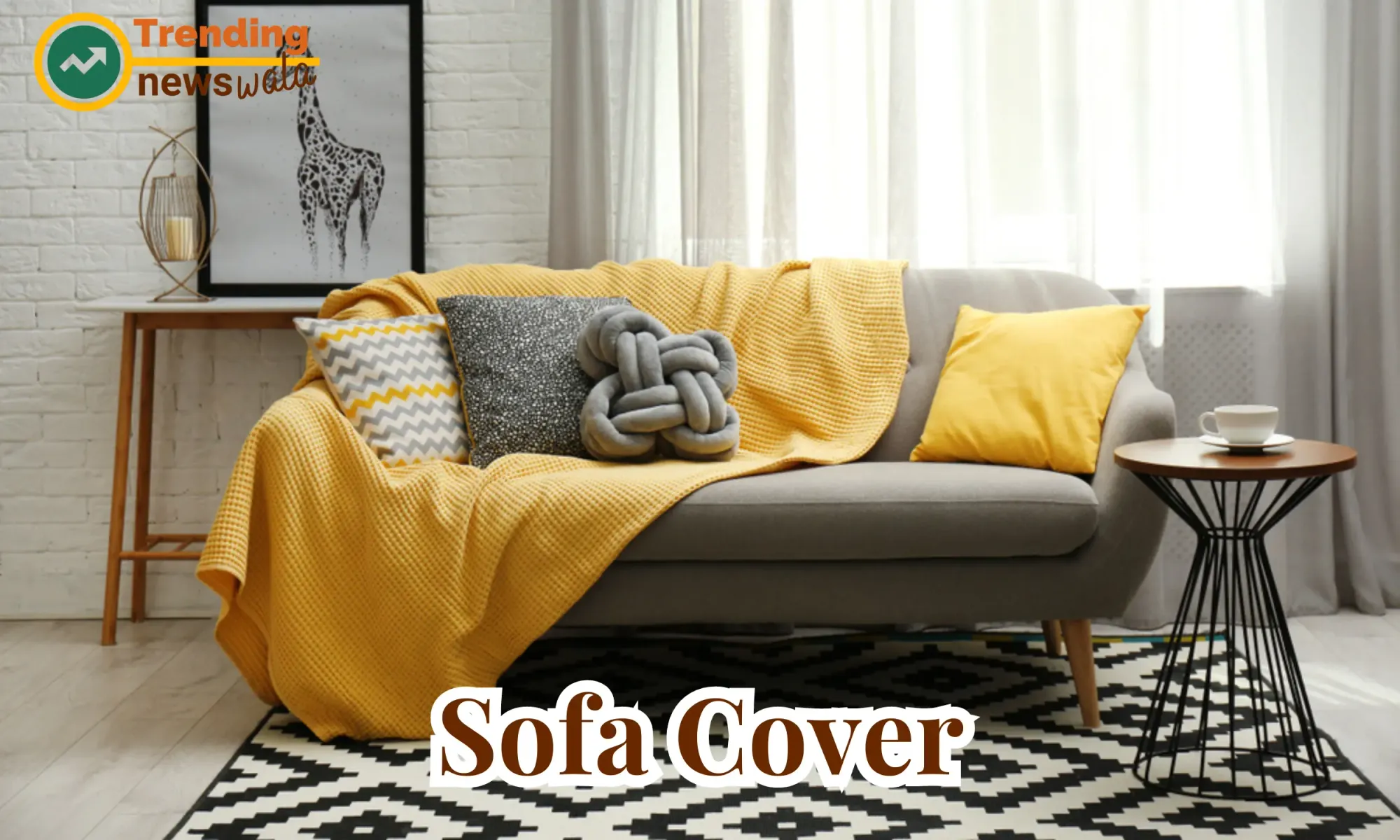
Armrests and headrests often receive a significant amount of direct contact. Using removable and washable covers for these areas can protect them from oils, sweat, and other substances that can contribute to wear and tear.
- Protective Covers: Armrest and headrest covers are fabric or slip-on coverings designed specifically for the arms and headrest areas of your sofa. They act as a protective layer, helping to preserve the original upholstery and prevent direct contact with substances that can cause damage.
- Preventing Oils and Sweat: The skin on our arms and the back of our heads can produce natural oils and sweat. Over time, these substances can be absorbed by the upholstery, leading to discoloration, stains, and deterioration. Protective covers act as a barrier, reducing direct contact and preventing these issues.
- Easy to Clean: Armrest and headrest covers are often designed to be removable and machine washable. This makes them easy to clean and maintain. Regular washing of these covers can help eliminate accumulated oils and keep your sofa looking fresh.
- Extended Lifespan: By using protective covers, you add an extra layer of defense against the elements that commonly contribute to wear. This can result in an extended lifespan for the sofa, as the areas that typically show signs of aging more quickly are better protected.
- Style and Personalization: Armrest and headrest covers come in various styles, colors, and patterns. This allows you to personalize the look of your sofa while also adding a practical layer of protection. You can choose covers that complement or contrast with your sofa's upholstery.
- Compatibility with Recliners and Sectionals: If you have a reclining sofa or a sectional with movable components, there are covers designed to fit these specific features. This ensures that even the more complex parts of your sofa are protected.
- Cost-Effective Solution: Using protective covers is a cost-effective solution compared to reupholstering or replacing the entire sofa. It allows you to address specific areas prone to wear without a significant financial investment.
- Regular Maintenance: Incorporating armrest and headrest covers into your regular maintenance routine is simple. Ensure that the covers are kept clean by washing them according to the manufacturer's instructions. This proactive approach contributes to the overall care of your sofa.
- Ease of Installation: Most armrest and headrest covers are designed for easy installation. They can be slipped on or secured in place without much effort, making it a convenient and user-friendly solution for protecting specific areas of your sofa.
- Versatility for Different Sofa Types: Whether you have a classic sofa, a sectional, or a sofa with reclining features, there are armrest and headrest covers designed to fit different types of sofas. This versatility makes them a practical choice for various furniture configurations.
Avoid Direct Sunlight
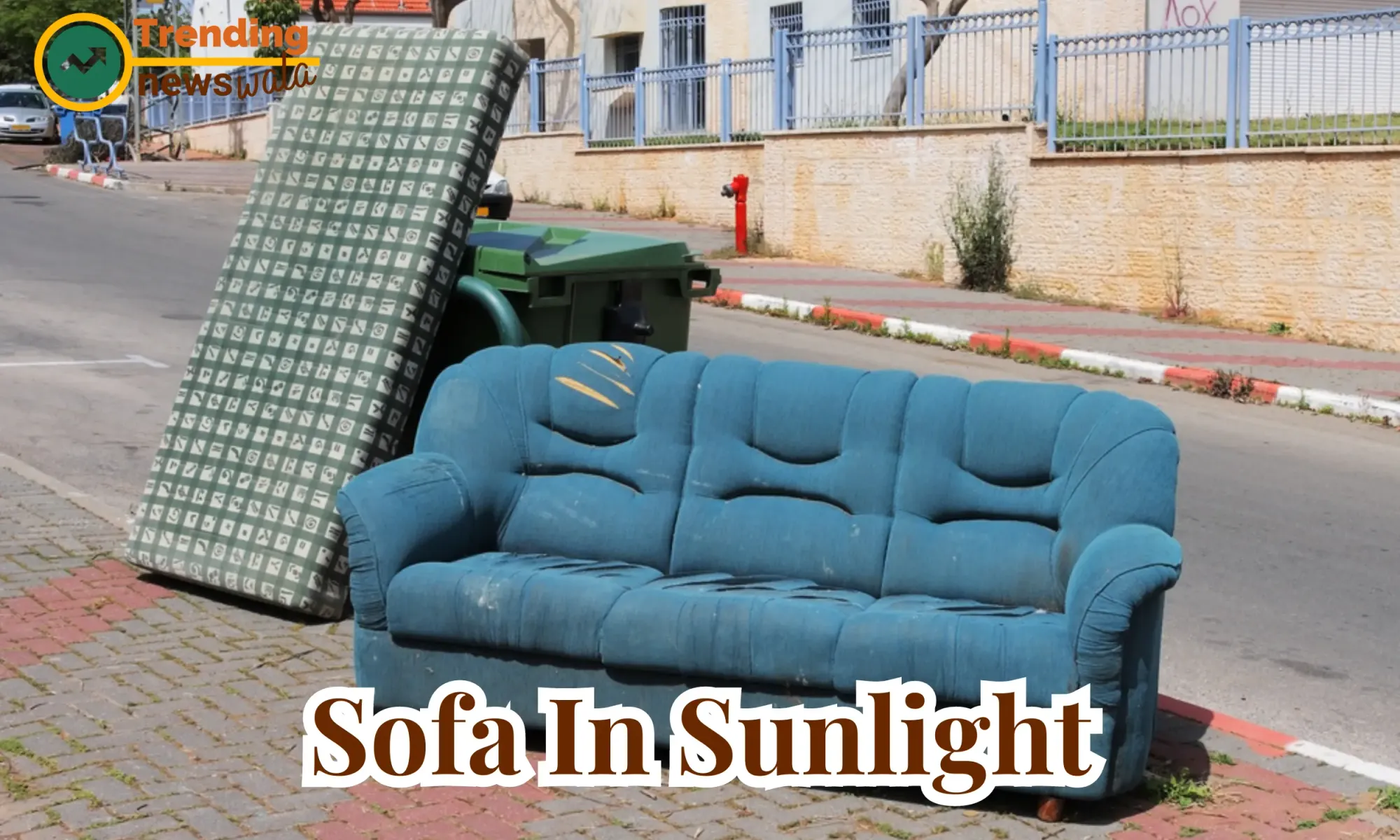
Prolonged exposure to direct sunlight can cause fading and deterioration of upholstery. Position your sofa away from windows or use curtains and blinds to control the amount of sunlight it receives. If direct sunlight is unavoidable, consider using UV-protective sprays on the fabric.
- Fading Prevention: Direct sunlight contains ultraviolet (UV) rays that can cause fading and discoloration of fabrics over time. By positioning your sofa away from direct sunlight or taking measures to minimize exposure, you can significantly reduce the risk of fading.
- Impact on Upholstery: Upholstery materials, especially fabrics, can be sensitive to sunlight. Continuous exposure may lead to a gradual breakdown of fibers, resulting in a loss of vibrancy and structural integrity. Leather upholstery can also be affected, as UV rays may cause it to dry out and crack.
- Preventing Uneven Fading: Prolonged exposure to direct sunlight can lead to uneven fading, with certain areas of the sofa experiencing more sunlight than others. This can result in a patchy or mismatched appearance. By avoiding direct sunlight, you ensure more uniform aging and wear.
- Use Window Treatments: Consider using window treatments such as curtains, blinds, or shades to control the amount of sunlight that enters the room. These can be adjusted to filter or block sunlight during peak hours, minimizing its impact on your sofa.
- Rotate Furniture Placement: If your room layout allows, periodically rotate the placement of your furniture. This can help distribute the effects of sunlight across different areas of the sofa, preventing overexposure to specific sections.
- UV-Protective Films: For windows that receive intense sunlight, applying UV-protective films can help filter out harmful UV rays. These films are designed to reduce fading and protect furniture and other items within the interior from the damaging effects of sunlight.
- Consider Indoor Plants or Awnings: Indoor plants strategically placed near windows can provide natural shade, reducing the impact of direct sunlight on your furniture. Additionally, installing awnings or shades on windows can be effective in blocking sunlight while still allowing natural light to enter.
- Regularly Inspect for Damage: Despite precautions, it's essential to regularly inspect your sofa for any signs of fading, discoloration, or damage. Promptly address any issues to minimize further deterioration.
- Protecting Leather Sofas: Leather sofas, in particular, can be vulnerable to sunlight. To protect leather upholstery, consider using leather conditioners or treatments recommended by the manufacturer. These products can help maintain the leather's suppleness and prevent cracking.
- Strategic Furniture Placement: When arranging your furniture, take into account the direction and intensity of sunlight throughout the day. Position the sofa in areas where it receives less direct sunlight or use protective measures to shield it during peak sunlight hours.
Clean Spills Immediately
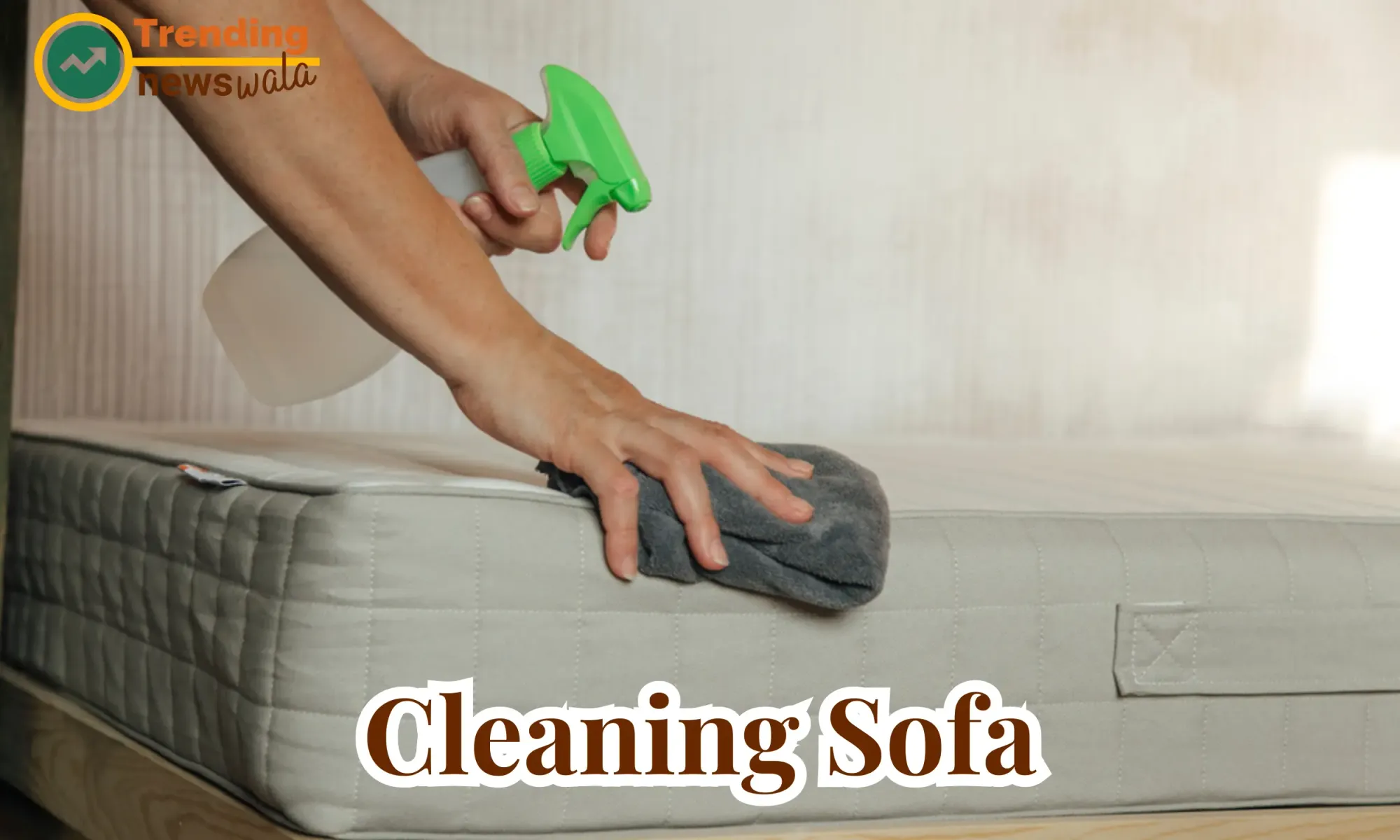
Accidents happen, but addressing spills promptly can prevent stains and damage. Blot the spill with a clean cloth or paper towel to absorb as much liquid as possible. Avoid rubbing, as it can spread the stain. If needed, use a mild fabric cleaner recommended for your sofa's upholstery.
- Preventing Stains: Spills, especially those involving liquids such as beverages or sauces, can quickly lead to stains on the sofa's upholstery. Cleaning spills immediately helps prevent the substances from penetrating the fabric or leather and causing lasting discoloration.
- Absorption with a Clean Cloth: When a spill occurs, use a clean, absorbent cloth or paper towel to blot the affected area. Blotting helps absorb the liquid before it has a chance to penetrate deeper into the fabric, minimizing the potential for stains.
- Avoid Rubbing: It's crucial to avoid rubbing the spill, as this can spread the substance and further embed it into the upholstery. Instead, use a gentle blotting or dabbing motion to lift the liquid from the surface.
- Type-Specific Cleaning Solutions: Depending on the nature of the spill and the sofa's upholstery material, have type-specific cleaning solutions on hand. For example, some fabrics may require a mild fabric cleaner, while leather might benefit from a leather cleaner. Always follow the manufacturer's guidelines for cleaning.
- Testing in an Inconspicuous Area: Before applying any cleaning solution, it's advisable to test it in an inconspicuous area of the sofa to ensure compatibility and prevent potential damage. This step helps you assess how the fabric or leather reacts to the cleaning agent.
- Blotting Technique: When cleaning spills, use a blotting technique rather than aggressive rubbing. Place a clean cloth over the spill and apply gentle pressure to absorb the liquid. Repeat the process with a fresh cloth until the area is dry.
- Immediate Action for Perishable Stains: Some spills, such as those involving food or beverages, may contain perishable substances that can lead to odors or mold if not promptly addressed. Taking immediate action helps prevent these secondary issues.
- Upholstery Code Guidelines: Upholstery fabrics often come with a cleaning code that provides guidelines on how to clean and maintain the material. Understanding the code (commonly labeled with letters like W, S, SW, or X) helps you choose appropriate cleaning methods.
- Professional Cleaning for Tough Stains: For stubborn or set-in stains, consider professional upholstery cleaning services. Professionals have the expertise and tools to tackle tough stains without causing damage to the fabric or leather.
- Regular Maintenance Routine: Incorporate regular maintenance into your cleaning routine. Even if spills are not immediately visible, periodic cleaning can help remove accumulated dirt and prevent long-term damage to the sofa.
Regular Vacuuming
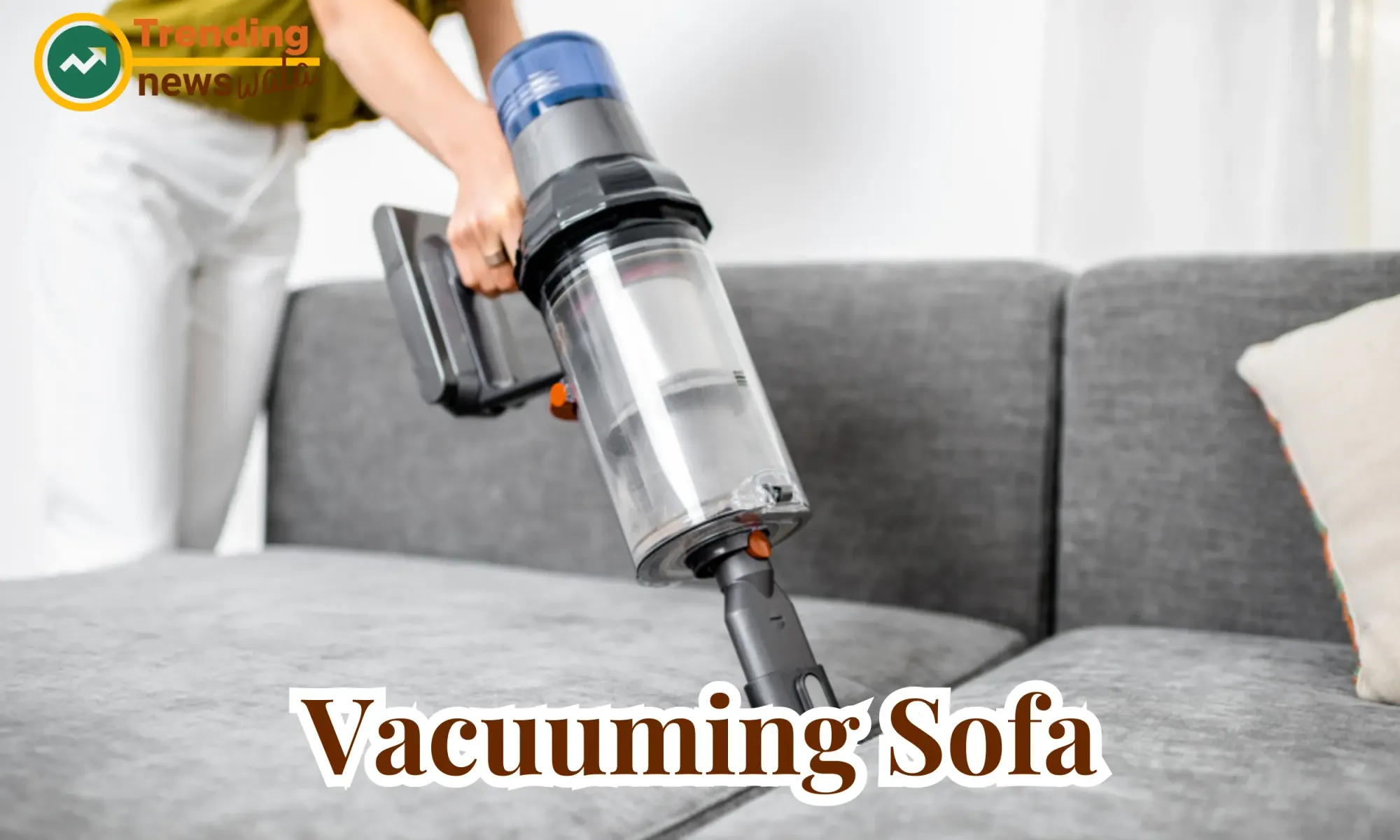
Dust and debris can accumulate on your sofa, contributing to wear and reducing its lifespan. Regular vacuuming with a soft brush attachment helps remove dirt and prevents it from settling into the fabric. Pay attention to crevices and folds where dust may accumulate.
- Dust and Debris Removal: Sofas can accumulate dust, dirt, crumbs, and other debris over time, especially in the crevices and between cushions. Regular vacuuming is an effective way to remove these particles and prevent them from settling into the upholstery.
- Preventing Wear and Tear: Dust and debris can act like abrasive particles, causing gradual wear and tear on the fabric or leather of your sofa. Regular vacuuming helps prevent this abrasive action, preserving the sofa's appearance and extending its lifespan.
- Maintaining Cleanliness: Vacuuming is a key component of maintaining overall cleanliness in your home. Regular removal of dust and allergens from the sofa contributes to a healthier indoor environment, especially for individuals with allergies or respiratory sensitivities.
- Upholstery Fabric Care: Different upholstery fabrics may have varying levels of resistance to dust and dirt. However, regular vacuuming is universally beneficial for all types of upholstery, helping to keep fabrics fresh and free from accumulated particles.
- Vacuum Attachments for Crevices: Many vacuum cleaners come with attachments designed for reaching into crevices, seams, and between cushions. These attachments are particularly useful for thorough cleaning, ensuring that dust and debris are removed from hard-to-reach areas.
- Preventing Allergen Buildup: Allergens, such as pet dander, pollen, and dust mites, can accumulate on upholstered surfaces. Regular vacuuming helps reduce the buildup of allergens, creating a more allergen-free environment in your home.
- Frequency of Vacuuming: The frequency of vacuuming depends on factors such as the level of daily use, the presence of pets, and the overall indoor air quality. As a general guideline, consider vacuuming your sofa at least once a week or more frequently if needed.
- Gentle Brush Attachments: When using a vacuum cleaner on upholstery, choose a gentle brush attachment suitable for the fabric or leather. This helps remove particles without causing damage. For delicate fabrics, you may also use a soft brush or upholstery attachment.
- Vacuuming Reversible Cushions: If your sofa has reversible cushions, make sure to vacuum both sides regularly. This ensures thorough cleaning and prevents the accumulation of dust and debris on the underside of the cushions.
- Combating Odors: Regular vacuuming helps eliminate trapped odors that can develop over time, especially in fabrics that absorb and retain smells. This is particularly important for sofas in households with pets or where individuals engage in activities that may leave odors.
Fluff and Rotate Sofa Cushions
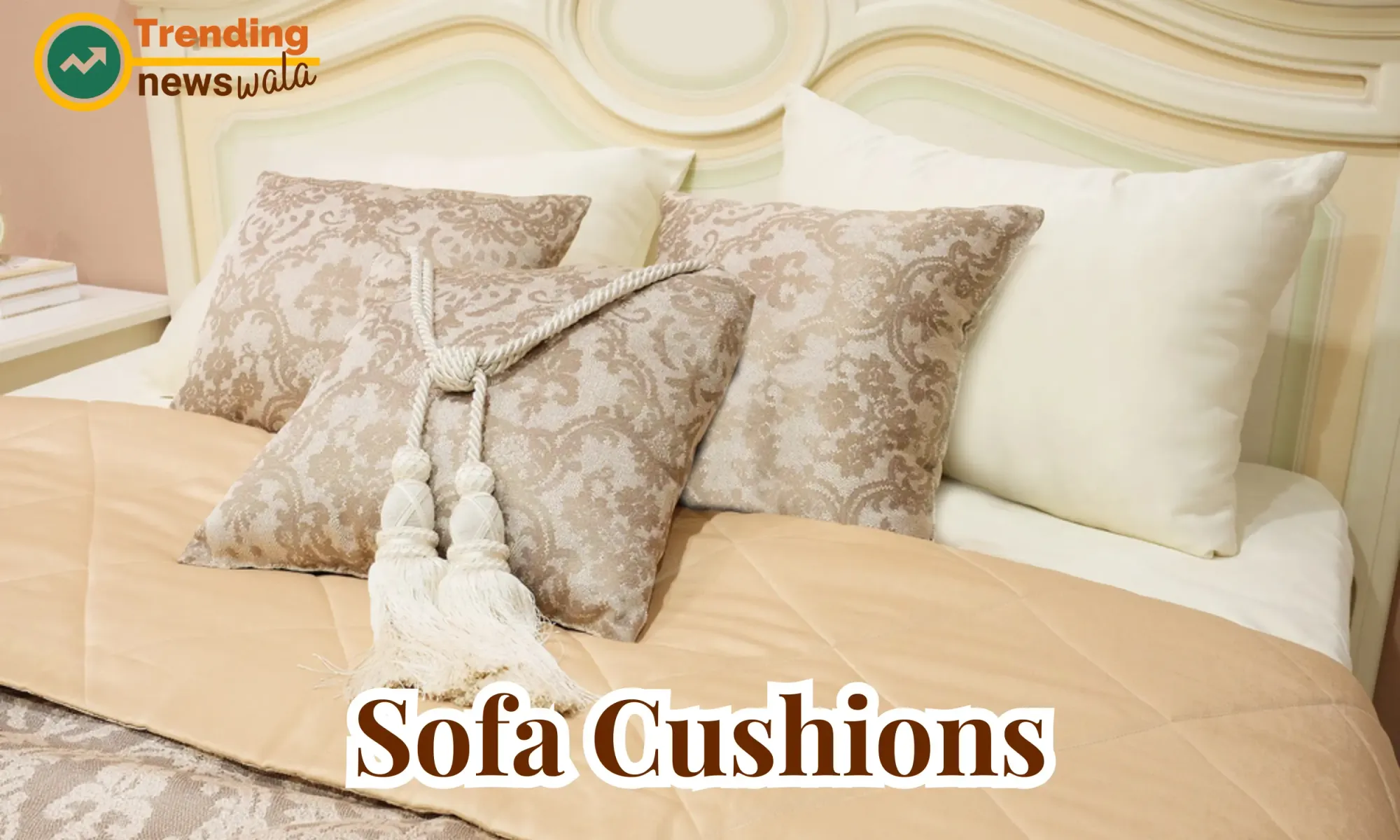
To maintain even wear and prevent sagging, fluff and rotate your sofa cushions regularly. This simple step helps distribute the impact of daily use, ensuring that no single area bears the brunt of wear and tear.
- Even Wear Distribution: Sofa cushions often experience varying degrees of wear due to regular use. Some areas may receive more pressure than others, leading to uneven compression and potential sagging. Fluffing and rotating cushions helps distribute wear more evenly.
- Preserving Cushion Shape: Over time, sofa cushions can lose their original shape and firmness due to compression from sitting. Fluffing involves redistributing the filling inside the cushions to restore their plumpness and maintain the intended shape.
- How to Fluff Cushions: To fluff cushions, remove them from the sofa and manually manipulate the filling. Gently pat and knead the cushions to break up any clumps and redistribute the filling evenly. This process helps prevent the formation of flat or uneven areas.
- Fluffing Techniques: Different types of cushions may require slightly different fluffing techniques. For fiber-filled cushions, pat and shake them to redistribute the filling. Feather-filled cushions may benefit from a gentle shake and kneading to restore loft.
- Rotating Cushions: Rotating cushions involves changing their positions on the sofa. For example, if a cushion is regularly used on the left side, move it to the right, and vice versa. This practice ensures that each cushion experiences a more balanced amount of wear over time.
- Preventing Indentations: Fluffing and rotating cushions prevent specific areas from becoming overly compressed and developing indentations. This proactive approach helps maintain a more even and comfortable seating surface.
- Frequency of Fluffing and Rotation: The frequency of fluffing and rotating cushions depends on the level of usage. For heavily used sofas, consider performing this maintenance task every few weeks. For sofas with lighter use, a monthly routine may be sufficient.
- Symmetrical and Reversible Cushions: If your sofa cushions are symmetrical or reversible, take advantage of these features when fluffing and rotating. Turning cushions over or flipping them can provide a fresh surface and contribute to even wear.
- Reversing Cushions: Some cushions have a designated top and bottom. Reversing the cushions involves flipping them to use the opposite side. This can be beneficial for maintaining a consistent appearance and wear pattern.
- Enhancing Comfort: Fluffing and rotating cushions not only preserve the aesthetics of your sofa but also contribute to ongoing comfort. By maintaining the shape and support of the cushions, you ensure that the sofa remains a comfortable and inviting place to sit.
Invest in Arm Caps

Armrests are often subject to wear and tear due to constant contact. Consider using arm caps, which are protective coverings designed to shield the arms of your sofa from oils, dirt, and friction.
- Protective Coverings: Arm caps are fabric or material coverings that are designed to fit over the armrests of your sofa. They act as a protective layer, providing a barrier between the armrests and external elements such as body oils, dirt, and friction.
- Preventing Oils and Dirt: The armrests of a sofa are prone to coming into direct contact with the natural oils from our skin. Over time, these oils can accumulate and contribute to discoloration and wear. Arm caps help prevent the transfer of oils and dirt from hands and arms to the sofa fabric.
- Friction Protection: Arm caps also offer protection against friction, which can occur when arms rub against the fabric during regular use. Friction can lead to wear and pilling, and arm caps provide an additional layer to absorb some of this contact and reduce its impact on the upholstery.
- Easy to Remove and Clean: Arm caps are typically designed to be easily removable and washable. This makes it convenient to clean them regularly, preventing the buildup of oils and dirt. Regular cleaning contributes to maintaining the overall cleanliness of the sofa.
- Matching Sofa Design: Arm caps come in various styles, colors, and materials. This allows you to choose options that complement the design and upholstery of your sofa. Some arm caps are even designed to enhance the aesthetic appeal of the sofa while providing practical protection.
- Compatibility with Different Sofa Types: Arm caps are versatile and can be used with various sofa types, including traditional sofas, loveseats, and sectionals. They can be found in styles that suit different armrest shapes and sizes.
- Extended Lifespan for Armrests: By investing in arm caps, you contribute to the extended lifespan of the armrests. The protective layer helps minimize the impact of daily use and prevents the armrests from showing signs of wear and aging prematurely.
- Customizable Options: Some arm caps are designed to be customizable or interchangeable, allowing you to switch them out for different looks or wash them more frequently. This flexibility adds a level of personalization to the care of your sofa.
- Consideration for Leather Sofas: Arm caps are particularly beneficial for leather sofas, as leather can be sensitive to oils and friction. Using arm caps on leather upholstery helps maintain its suppleness and prevents the development of visible wear patterns.
- Cost-Effective Solution: Investing in arm caps is a cost-effective solution for protecting the armrests of your sofa. It's a proactive measure that can help preserve the appearance of the sofa and reduce the need for more extensive cleaning or maintenance in the long run.
Consider Slipcovers
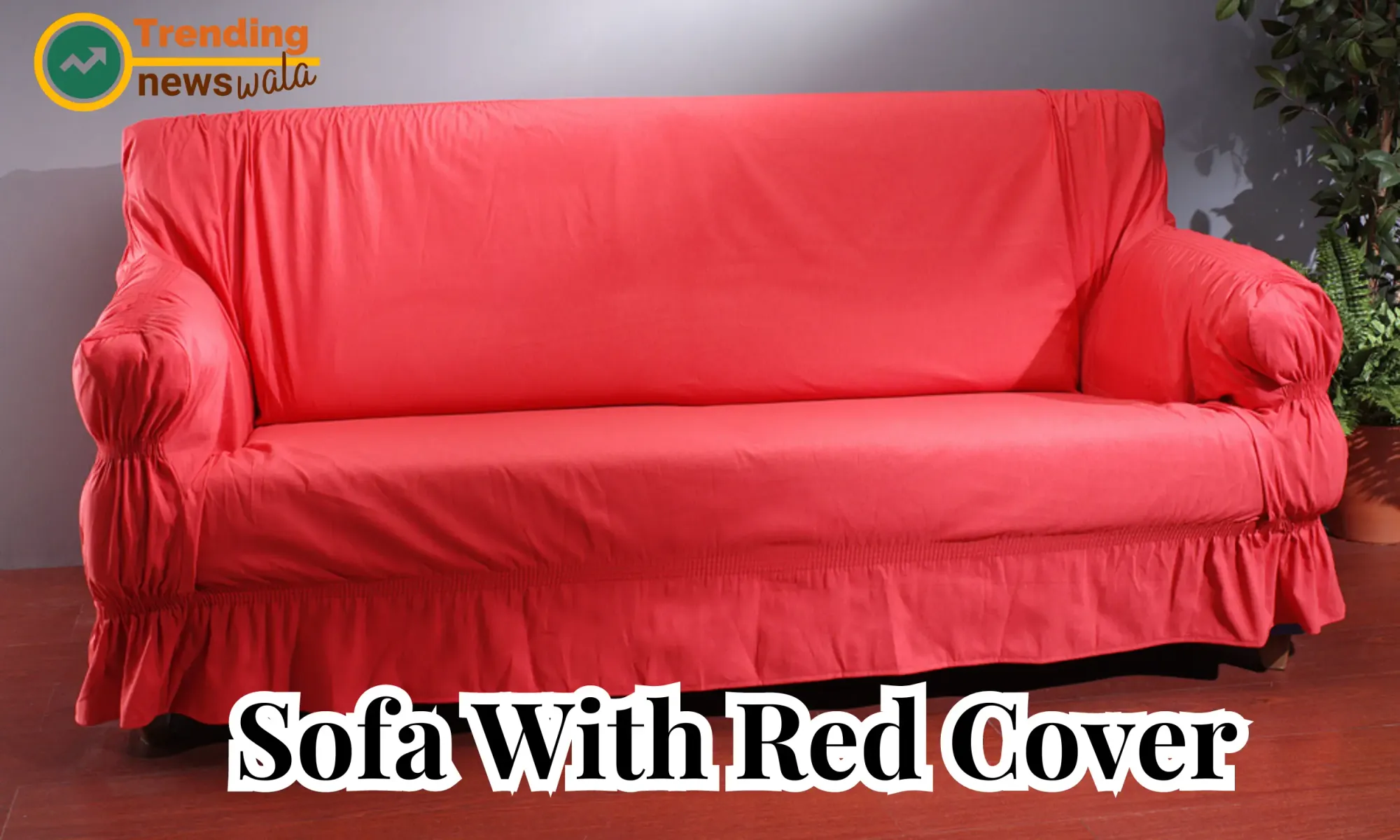
Slipcovers are a versatile and protective option for sofas. They can be easily removed and washed, providing a layer of defense against spills, stains, and everyday wear. Choose slipcovers that are tailored for your sofa's specific dimensions.
- Full Sofa Coverage: Slipcovers are designed to cover the entire sofa, including the main frame, cushions, and sometimes even the arms and back. This comprehensive coverage offers protection against spills, stains, and general wear and tear.
- Protection from Spills and Stains: Slipcovers act as a barrier against spills, preventing liquids from reaching the sofa's original upholstery. This is particularly useful for households with children, pets, or frequent entertaining, where accidental spills are more likely to occur.
- Easy to Install and Remove: Slipcovers are designed for easy installation and removal. This makes them a convenient solution for those who want to protect their sofa temporarily or change its appearance without making a permanent commitment.
- Variety of Styles and Fabrics: Slipcovers come in a wide variety of styles, colors, and fabrics. This allows you to choose a slipcover that complements your existing decor or experiment with different looks without the need for reupholstering.
- Customization and Personalization: Many slipcovers are customizable, allowing you to tailor the look of your sofa to your preferences. Whether you prefer a fitted, tailored appearance or a more relaxed, loose fit, slipcovers offer versatility in customization.
- Washable and Easy to Clean: One of the key advantages of slipcovers is their washability. Most slipcovers are machine washable, making it easy to clean and maintain the appearance of your sofa. This is especially beneficial for homes with active lifestyles.
- Protecting Against Pets: Slipcovers are an excellent solution for households with pets. They provide a protective layer against pet hair, scratches, and accidental stains while offering an easy-to-clean surface.
- Preserving Original Upholstery: By using slipcovers, you can preserve the original upholstery of your sofa. This is particularly important for vintage or high-quality sofas with unique or delicate fabrics that you want to safeguard from everyday wear.
- Seasonal Changes: Slipcovers offer the flexibility to change the look of your sofa with the seasons or as your style preferences evolve. You can easily switch slipcovers to create a cozy, warm feel for winter and a lighter, brighter look for summer.
- Cost-Effective Sofa Makeover: Slipcovers provide an affordable way to give your sofa a fresh and updated appearance without the cost and commitment of reupholstering. It's a cost-effective solution for those who want to change their decor periodically.
Regular Professional Cleaning
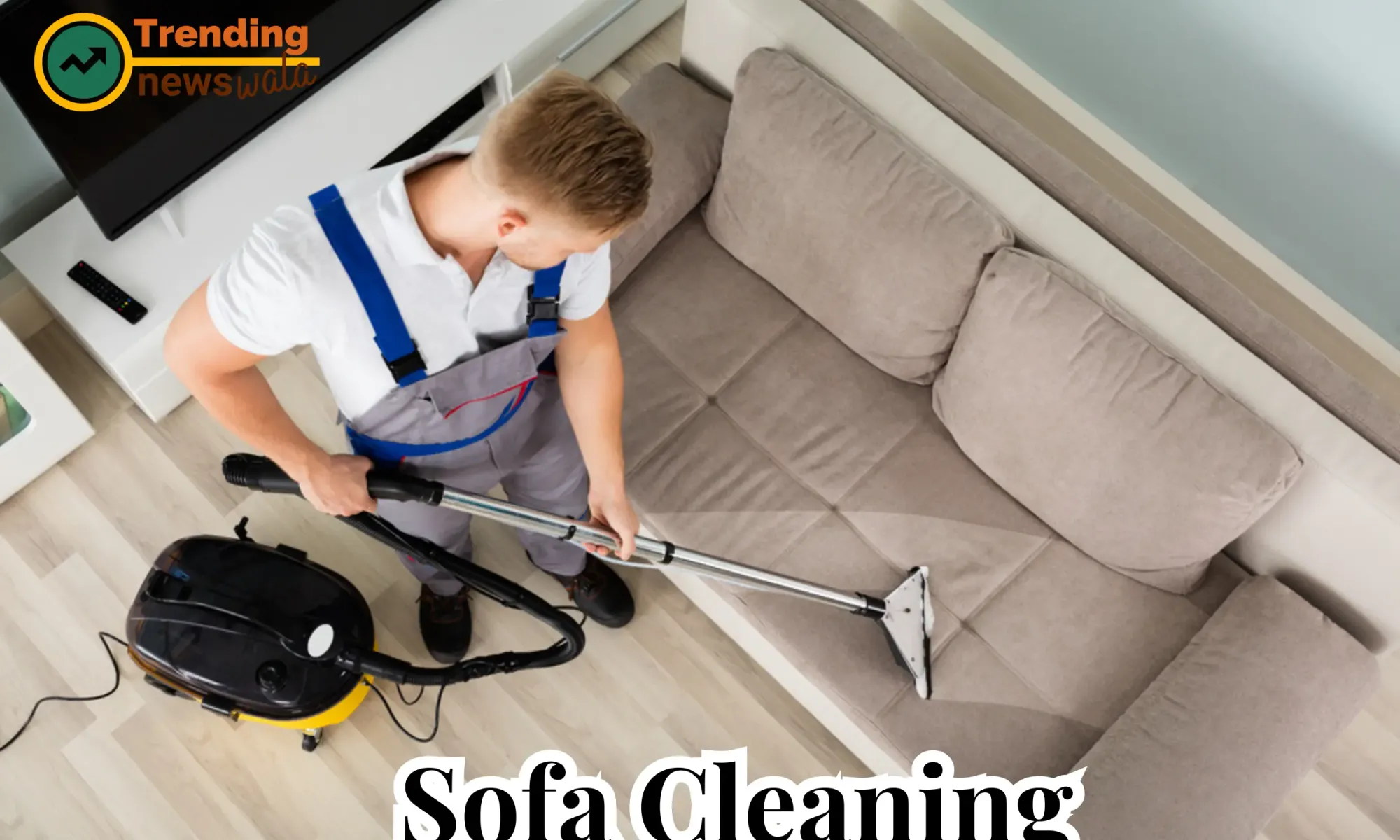
Periodic professional cleaning can rejuvenate your sofa by removing deep-seated dirt and stains. Consult the manufacturer's guidelines for cleaning recommendations and hire a reputable upholstery cleaning service when needed.
- Deep Cleaning Expertise: Professional cleaners have the expertise and equipment to perform deep cleaning on sofas. This involves using specialized techniques to remove dirt, allergens, and contaminants that may be embedded deep within the upholstery.
- Fabric-Specific Treatment: Different upholstery fabrics require specific cleaning methods to avoid damage. Professional cleaners are trained to identify the fabric type and apply appropriate cleaning solutions and techniques to ensure a safe and effective cleaning process.
- Stain Removal: Stubborn stains, whether from spills, pet accidents, or other sources, can be challenging to remove with regular household cleaning methods. Professional cleaners have access to stain removal products and techniques that can significantly improve the chances of eliminating tough stains.
- Odor Elimination: Over time, sofas can develop odors from various sources, including spills, pet dander, and general use. Professional cleaning services often include deodorizing treatments to eliminate unpleasant odors and leave your sofa smelling fresh.
- Extended Lifespan: Regular professional cleaning contributes to the extended lifespan of your sofa. By removing accumulated dirt and contaminants, professional cleaning helps prevent premature wear and deterioration of the upholstery, preserving the sofa's structural integrity.
- Enhanced Appearance: Professional cleaning restores the vibrancy and appearance of your sofa. It can bring back the original color and luster of the upholstery, making your sofa look refreshed and well-maintained.
- Allergen Removal: Sofas can harbor allergens such as dust mites, pet dander, and pollen, which can negatively impact indoor air quality. Professional cleaning includes the removal of these allergens, creating a healthier environment, especially for individuals with allergies or respiratory sensitivities.
- Tailored Cleaning for Leather Sofas: Professional cleaners are skilled in providing tailored cleaning for leather sofas. This involves using appropriate leather cleaning products and techniques to clean and condition the leather upholstery without causing damage.
- Scheduled Maintenance: Establishing a schedule for professional sofa cleaning ensures that your furniture receives regular maintenance. The frequency of professional cleaning may vary based on factors such as usage, household conditions, and the presence of pets.
- Convenience and Time Savings: Professional cleaning saves you time and effort compared to attempting deep cleaning on your own. Cleaning experts come equipped with the necessary tools and solutions, allowing for a more efficient and thorough cleaning process.
By incorporating these tricks into your sofa care routine, you can extend its lifespan and enjoy its comfort and style for years to come. Remember that prevention is key, and a little proactive care can make a significant difference in preserving the beauty and functionality of your beloved sofa.

